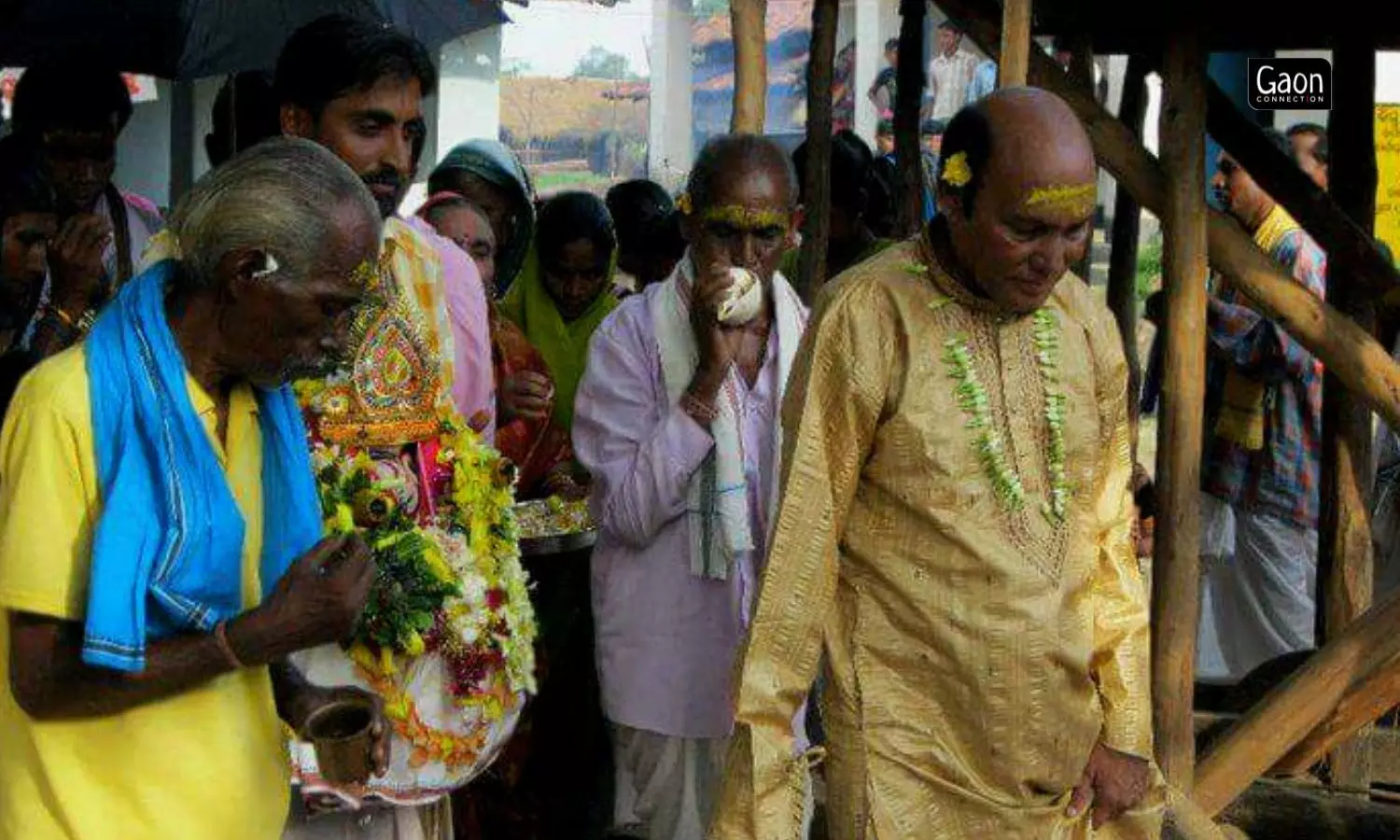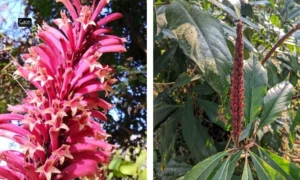Mohammad Akhtar, in a dhoti and kurta complete with a chandan tika on his forehead, is busy. It is the auspicious occasion of Ashadha Panchami, three days after Ashadha Ditiya when the world-famous Rath Yatra of Puri in Odisha started this year on June 20.
Akhtar impatiently adjusts the marigold garland and the gamcha that have got entangled around his neck and gets on with the ritual of chhera pahanrai, the sweeping and sprinkling of holy water around the chariots of Lord Jagannath, Lord Balarama and Goddess Subhadra.
Unlike Puri, the chariot festival or rath yatra of Akhtar’s village Remanda in Jharsuguda district, over 420 kilometres northwest of Puri, starts three days later. It was celebrated last week on June 23.
Mohammad Akhtar, who does the chhera pahanra, is the descendant of Waras Mohammad who, it is believed, started the tradition of the rath yatra in Remanda around 1900 AD. Over the years, Remanda has earned its well deserved sobriquet of Sadbhavana Srikhetra for the exemplary bonhomie amongst the Muslims, Hindus, tribals and other communities in the village, who together celebrate the rath yatra.
At Remanda, Akhtar is doing exactly what the Gajapati Maharaja (considered to be the leading worshipper of the deities) does at the Jagannath Temple in Puri. Only, while the Maharaja uses a broom made of gold, Akhtar’s broom is made of coconut husks. After Akhtar performs chhera pahanrai, the rath yatra of his village begins.
Also Read: Jagannath Yatra: World’s largest chariot to be dragged by ropes made by a tribal community in Odisha
Akhtar completes the chhera pahanra and watches as the 12-feet high chariot wobbles forward accompanied by dancing, singing and sounds of cymbals, conches and drums. Roots of a banyan tree, bara gachha ohala are hitched to the rath and villagers from about 20 Muslim families and about 40 Hindu families together draw the chariot forward.
“Communal harmony and bhai chara (sense of brotherhood) are the hallmark of our social life. We observe not only the car festival, but also celebrate festivals like Nuakhai (of Western Odisha) and Eid, with the same gusto and gaiety,” Mohammad Rouf, told Gaon Connection.

Mohammad Akhtar, who does the chhera pahanra, is the descendant of Waras Mohammad who, it is believed, started the tradition of the rath yatra in Remanda around 1900 AD.
Rouf is a member of the Samhati Manch, which is preparing to erect a temple for Jagannath, Balarama and Subhadra in about 15 decimals (approximately 6,533 sq feet) of land in Remanda. Meanwhile, the 30-membered Ratha Yatra Parichalana Parishad now organises the festival in the village.
“My father Gountia Mohammad Jamiullah did chhera paharan till 2021. But he stopped doing so after my mother died of COVID-19. It was decided at a village meeting that I should now continue the work. During a puja in 2022, my father handed over his gamcha to me, a symbolic gesture of transferring the responsibility,” said Akhtar, who otherwise runs a transport business.
Gountia Mohammad Jamaiullah recalled how he had started doing chhera pahanra in 1983 after his father Mohammad Khalil Gountia, passed away.
Earlier, Remanda had to borrow the idols of the three deities from the nearby village of Sunari as it did not have their own. “But in 1996, we got our own idols that are kept and worshipped at the home of our priest Subhas Satpathy,” Sajjad Badshah, a cousin of Akhtar, told Gaon Connection.
The idols are taken from the home of the priest and placed on the chariot and pulled for about 400 metres. They are then housed in a clubhouse for nine days before they make the return journey.
“After that, the deities return to my Thakura Gudi (altar), and the visharjana (submersion) of the bara gacha ohala (the ropes that pull the chariot) happens in the village tank,” priest Satpathy, also a teacher of the Government High School in nearby Pandri village, told Gaon Connection. “The chariot is made of sal wood, while the repair of its different parts is done with neem wood after each festival,” he added.
Samhati Manch in Remanda is planning to put up a main temple for the deities and another one for their aunt Mausi Maa at the village, where they come and spend the nine intervening days of the rath yatra.
Also Read: Bali Yatra commemorates the rich maritime history of Odisha
“We have tentatively earmarked a budget of one crore rupees to set up the main temple and Mausi Maa Mandir,” Lalit Dani, secretary of Samhati Manch and the Ratha Yatra Parichalana Parishad, told Gaon Connection.

At Remanda, Akhtar is doing exactly what the Gajapati Maharaja (considered to be the leading worshipper of the deities) does at the Jagannath Temple in Puri. Only, while the Maharaja uses a broom made of gold, Akhtar’s broom is made of coconut husks.
According to him, the Samhati Manch will in addition buy the images of the deities from Puri at a cost of about Rs 35,000. “People in Remanda Panchayat will raise the money through donations,” Radhakanta Majhi, another member of Samhati Manch, told Gaon Connection.
“We spend over Rs 30,000 during Gundicha Yatra, which is the onward journey of the deities to their aunt’s home. Their return journey or the Bahuda Yatra, is more expensive, about Rs 45,000 on account of the more elaborate rites and rituals performed now,” explained Majhi who belongs to the Gond community.
Last year, the district administration of Jharsuguda provided about Rs 15 lakh for setting up civic amenities at the site of the festival in order to hold the rath yatra that over 8,000 people attended from adjoining villages as well.
“The Samhati Manch used the money for setting up the community hall, toilets and septic tanks,” Saroj Kumar Samal, Director of the state department of information and public relations, and former Jharsuguda Collector, told Gaon Connection.
Also Read: Kartik Purnima and the traditional miniature boat craft of Kendrapara, Odisha
















